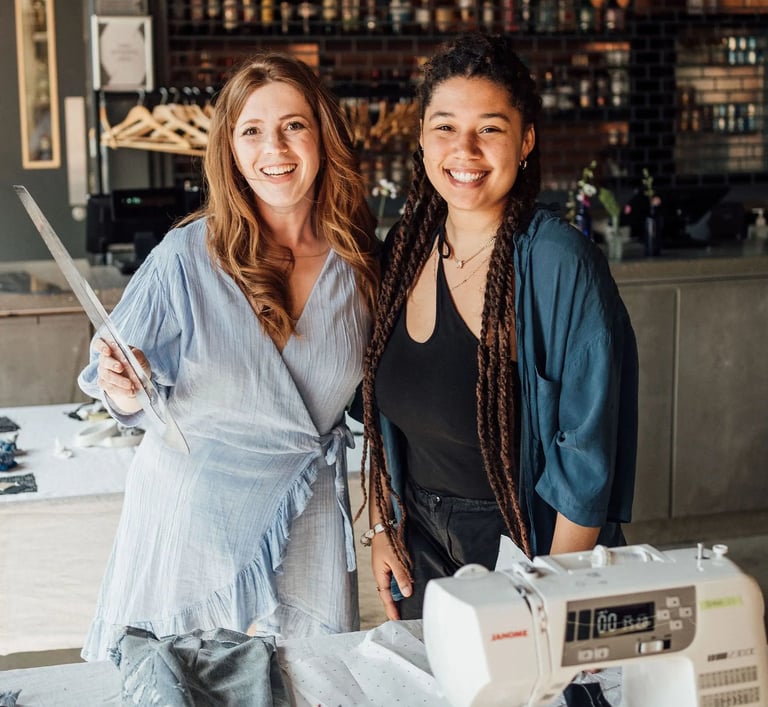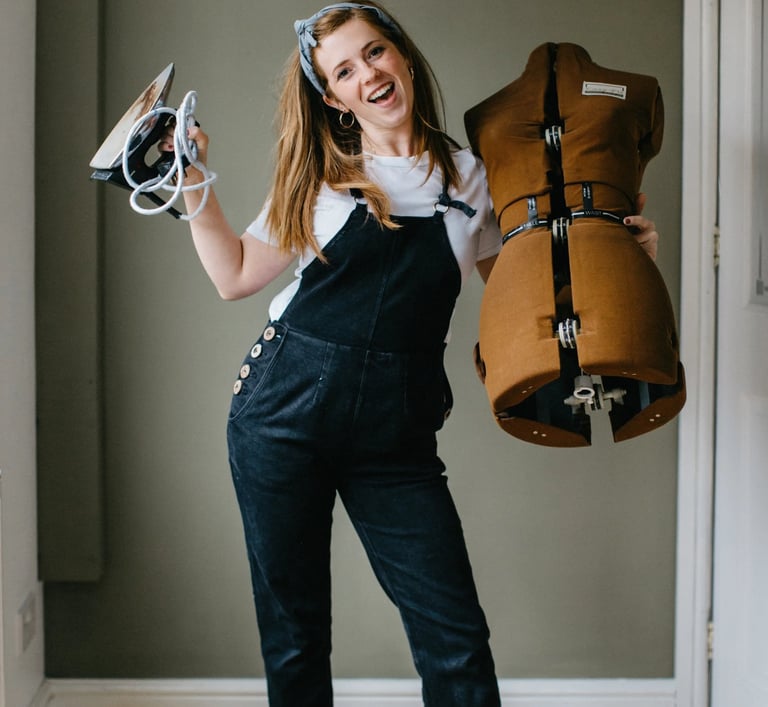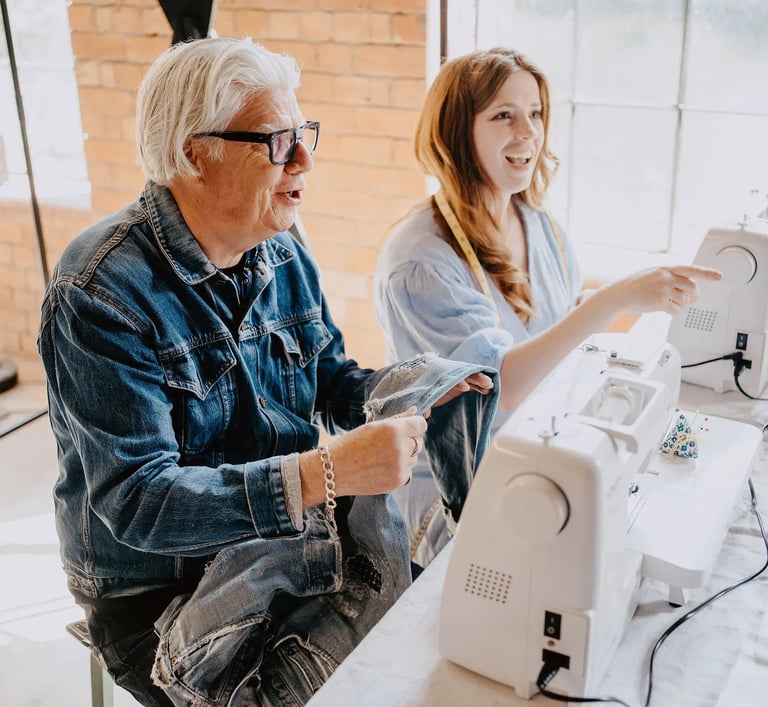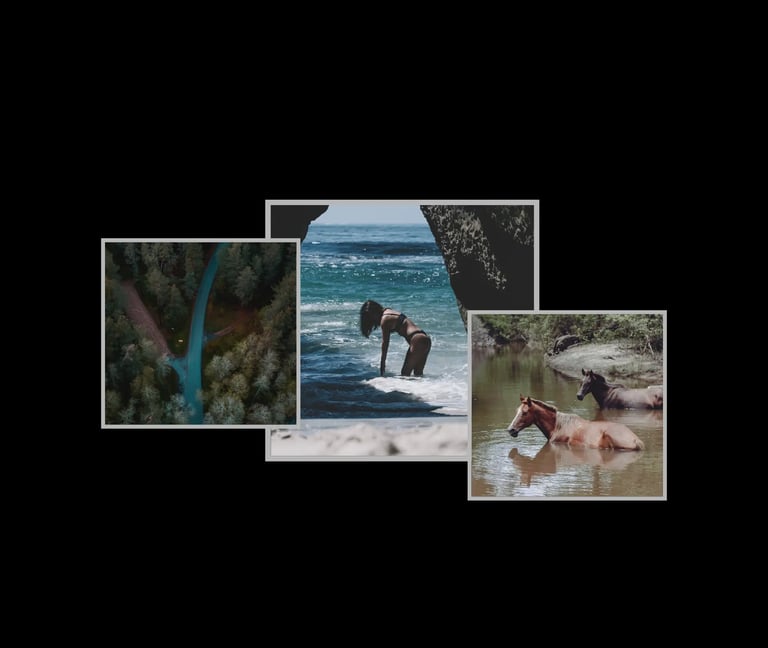Sewing Change: How Abigail Is Stitching Together Art, Activism, and Sustainability
PEOPLE & STORIES
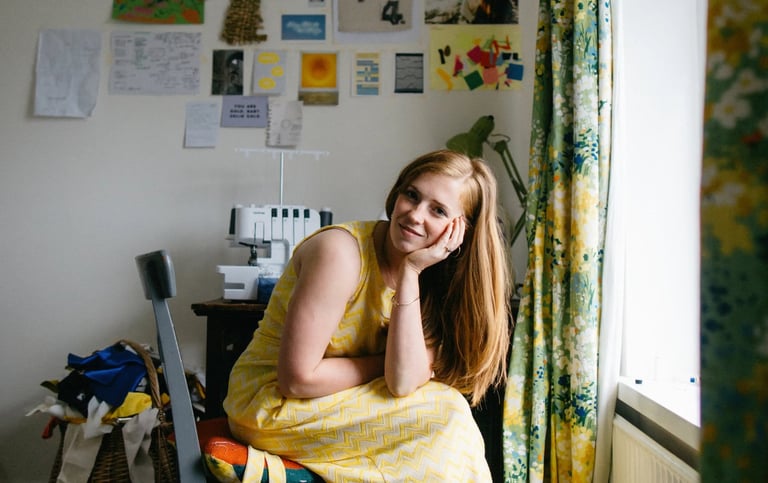

Name: Abigail Wastie
Title/Profession: Textile Artist and Activist
Based in: United Kingdom
Instagram: @threadoflife
Known for: Abigail is known for championing sustainable textiles, ethical fashion, and hands-on education that empowers communities to live and create more consciously.
From childhood petitions to pioneering ethical fashion initiatives, Abigail has long been driven by a deep sense of justice, creativity, and care for the planet. As the founder of Thread of Life, she blends art, activism, and education to challenge the fast fashion status quo and inspire more conscious choices. In this interview, she shares her journey from hand-sewn skinny jeans to sustainable textile programs for students — and why true change starts with transparency, curiosity, and the courage to slow down.
1. Can you tell us a bit about your journey? What led you to start Thread of Life and dive into the world of ethical and sustainable textiles?
As a child, I was always curious about the ethics behind the products we used. My mum subscribed to a Traidcraft shopping magazine that covered topics like human rights and fair trade. I remember getting my classmates to sign letters to then-Prime Minister Tony Blair, petitioning for fairer trade laws.
I loved art growing up, so I went on to study Textile Art at Winchester School of Art. I stopped shopping on the high street at 18 because I didn’t want to support the exploitation within the fast fashion industry. I began buying second-hand clothes but was often limited by what was available, so I taught myself to sew—mainly because I wanted things like skinny jeans, which I couldn't find in charity shops back then.
After graduating, I interned at People Tree, the world’s first Fair Trade fashion brand, in pattern cutting and garment technology. It was there I saw first-hand how working with a brand that supports and upskills its producers can positively transform communities.
I spent several years working in retail, pubs, and cafes before landing my first graduate job at Paul Smith in the fabric team. I later moved into production and product development. During that time, I had three children. When the pandemic hit, I was made redundant—fashion was severely impacted, and most of our mills were in China and Italy.
That pushed me to create my own business, one that could flex around family life. I began by offering product development to small brands, teaching workshops, and selling craft kits online. Over the past five years, the work has evolved into larger events focused on ethical shopping and making. I also now run a registered alternative provision provider, where students who can’t attend mainstream schools can gain accreditation in sustainable textiles.
2. What’s one core belief or value that guides what you do?
Equality of human rights, respect for the environment, and truth to materials.
3. What are some common misconceptions about sustainable fashion, and how do you address them?
One major misconception is that sustainability is only for the wealthy. But truly, the most sustainable wardrobe is the one you already own. You don’t need to spend more to live more consciously.
Green marketing can often feel classist, which alienates many people. For example, many fast fashion customers actually have the means to shop better—they just haven’t made the shift. Shein’s average customer is a woman earning over $65k a year, spending around $100 monthly. Imagine if that same person bought just five pieces a year—better quality, ethically made—she’d spend the same but with far less impact. As Patrick Grant says: buy less, buy well.
Another issue is the promotion of fabrics made from recycled plastics. While they may sound eco-friendly, these materials are energy-intensive to produce, often not recyclable themselves, and generate microplastics in both use and disposal. Many of these fabrics are made from virgin plastic bottles, not post-consumer waste. Natural fibers like merino wool are breathable, antibacterial, and home-compostable—far more sustainable in the long run.
Finally, there's this idea that the tide is turning. But if you look at the growth of fast fashion giants, it's clear that conscious consumerism still has a long way to go.
4. How do you educate your community about the importance of material transparency in textiles?
I run sustainable textile programs where students create garments that are fully home-compostable, using GOTS-certified fabrics and threads. I also work with British farmers and manufacturers, including an upcoming project with John Smedley where secondary school students will design sustainable British wool school uniforms.
In the wider community, I host large shopping and learning events like Derby’s Ethical Christmas Market and The Ethical Atelier, which offer more accessible ways to shop and learn sustainably.
5. Who or what inspires you lately—a book, person, movement, or place?
I really admire what Patrick Grant is doing with Community Clothing. Artistically, I’m inspired by people like Alice Gabb and by artists such as Lucy Orta, Doris Salcedo, and Jenny Holzer, especially in how they use text and the body in their work.
I'm currently reading If Women Rose Rooted, and I even named one of my children after a character from the Clan of the Cave Bear novels—stories about Ice Age life among Neanderthals and Cro-Magnons. The detail in how they built homes, hunted, and made clothes is awe-inspiring.
6. Where do you go to reconnect—with yourself, the planet, or your creativity?
My garden. Or really, anywhere outdoors.
7. What does “living consciously” mean to you right now?
It means slowing down, consuming less, and pausing more. Whenever something crosses our doorstep, we ask: is this essential? And what is its origin?
8. Which ethical or eco-conscious brands are part of your everyday life?
Community Clothing
Smol (eco cleaning)
Organic Cotton Biz (fabrics)
Linwood (interiors—when I can afford it!)
Mooncup, Polarn O. Pyret (children’s wear)
Eco Outfitters (school uniforms—though I’m working on making my own)
Neal’s Yard, Weleda (beauty and wellness)
@harrisandrose and The Fig (local refill shops)
G-Nappies, Naty (nappies)
Birkenstock, Dr. Martens (for their durability—our shoes go through three kids!)
Our local shoe mason and boot repair company
Paul Smith (their GOTS-certified range)
John Smedley (factory shop samples in Matlock)
Duffield Dairy (milk and dairy just down the road)
Just Ice (local ethical ice cream)
Renishaw Wines (local English wine)
We also go through phases of making our own deodorants, body care, and herbal remedies. Our garden’s still young, but I’m nurturing fruit trees and bushes with hope.
9. For individuals inspired by your work, what advice would you give to help them start their own sustainability journey?
Just start. Keep it simple. Experiment. Document what you do. The best ideas will come when you're not bogged down by admin or perfectionism. Don’t wait to get it all figured out—just try.
10. What upcoming projects are you particularly excited about?
I’m excited to continue raising awareness—through education, creativity, and community—to help more people engage with sustainability in meaningful, accessible ways.
